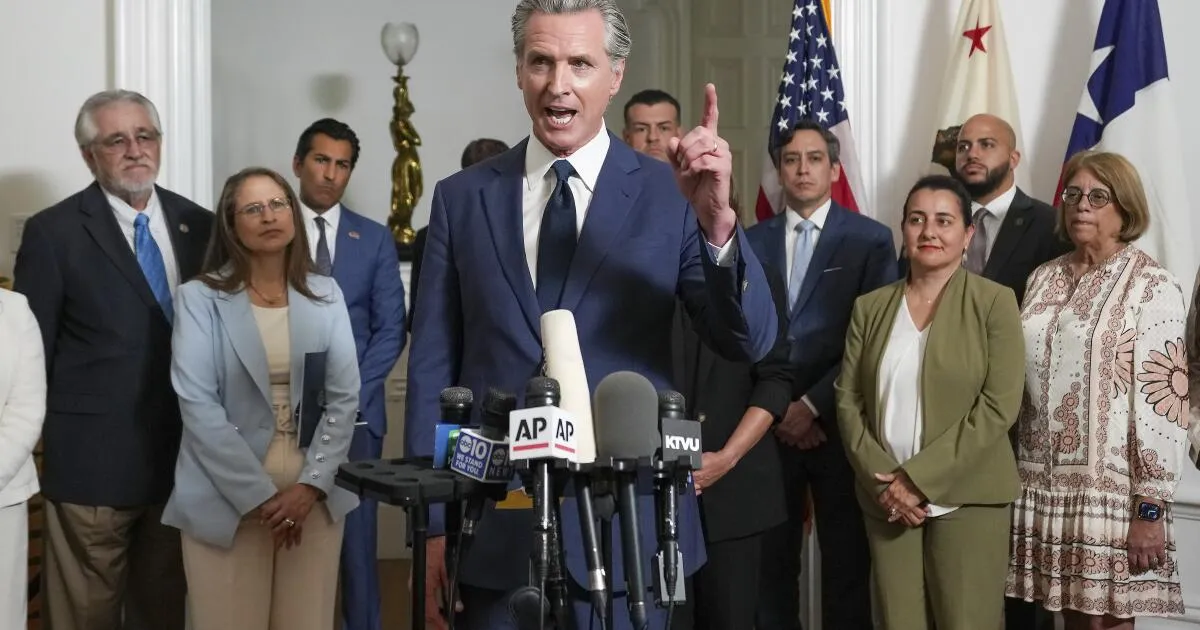
Governor Gavin Newsom’s initiative to temporarily redraw California’s congressional districts is finding more backing than opposition, according to a recent poll. However, with a significant number of voters still undecided, the measure's future remains uncertain. This poll, conducted by the UC Berkeley Institute of Governmental Studies for the Los Angeles Times, reveals crucial insights about public sentiment regarding the redistricting push that favors California Democrats.
The poll indicates that when registered voters were asked about the redistricting strategy, 46% viewed it as a positive initiative, while 36% opposed it. Notably, if the temporary gerrymandering measure appears on the statewide special election ballot in November, 48% of voters expressed their intention to support it. Conversely, nearly a third of respondents indicated they would vote against the measure, with 20% still undecided.
Mark DiCamillo, the director of the Berkeley IGS Poll, commented on the findings, stating, “That’s not bad news. It could be better. With ballot measures, you’d like to be comfortably above 50%, as undecided voters typically lean towards voting no.” Among voters who consistently participate in statewide elections, support for the redistricting plan rises to 55%, with only 34% expressing opposition. DiCamillo emphasized that appealing to this subgroup is crucial for the initiative’s success.
The ongoing battle over political boundaries holds significant implications for the control of the U.S. House of Representatives, where Republicans currently maintain a slim majority. Newsom and other Democratic leaders argue that California must respond to Texas’ partisan mapmaking efforts to retain a balanced representation in Congress. Texas’ recent redistricting plan has created five new Republican-leaning seats, which could solidify the GOP’s majority in the House. California’s proposed adjustments aim to counteract these gains, albeit temporarily, for the upcoming 2026, 2028, and 2030 congressional elections.
Despite the push for redistricting, critics contend that the plan undermines California's voter-approved independent redistricting commission, arguing that one power grab cannot justify another. The partisan nature of this debate is reflected in the poll results, where nearly 70% of Democratic voters support the measure, while a staggering 72% of Republicans oppose it. High-profile endorsements have emerged, with former President Obama backing the initiative, while California’s former Governor Arnold Schwarzenegger criticized it in a recent interview.
The initiative faced significant opposition during legislative hearings in Sacramento, where Republicans condemned it as a partisan maneuver. In an effort to obstruct the process, California Republicans filed an emergency petition with the state Supreme Court, claiming that Democrats breached the California Constitution by hastily advancing the proposal through the Legislature. However, the court rejected this challenge on Wednesday.
Newsom, who has emerged as the face of California’s redistricting campaign, has witnessed an uptick in his approval ratings as he confronts Trump and Republican leaders. Recent surveys show that more voters now approve (51%) than disapprove (43%) of his job performance, a marked improvement from April when voter sentiment was evenly split. The poll, which involved 4,950 registered voters surveyed online in both English and Spanish from August 11 to 17, revealed that 59% of respondents support Newsom’s combative stance against Trump, with 71% of younger voters aged 18 to 29 favoring this approach.
Political analysts suggest that having Newsom lead the redistricting campaign, which seemed like a liability just a month ago, has become advantageous as his profile rises nationally. Political scientist Eric Schickler noted that voters are often reluctant to return control of redistricting to politicians after an independent process was established, but the current political climate has shifted perceptions. “While I wouldn’t be surprised if the margin narrows between now and November, this is a good place for the proposition to start,” Schickler said.
To secure victory in the upcoming election, it is imperative that the campaign works to sway undecided voters. Among Latino, Black, and Asian voters, nearly 30% remain uncertain about how they will vote on the redistricting measure. Additionally, women show higher rates of indecision compared to men, at 25% versus 14%. Younger demographics also display uncertainty, with nearly a third of 18- to 29-year-olds unsure of their stance, compared to only 11% of those aged 65 and older.
Even among Democrats, skepticism about the proposal persists, with one in five respondents expressing uncertainty. The presence of undecided voters presents a significant opportunity for the campaign to gain traction as the election date draws nearer.